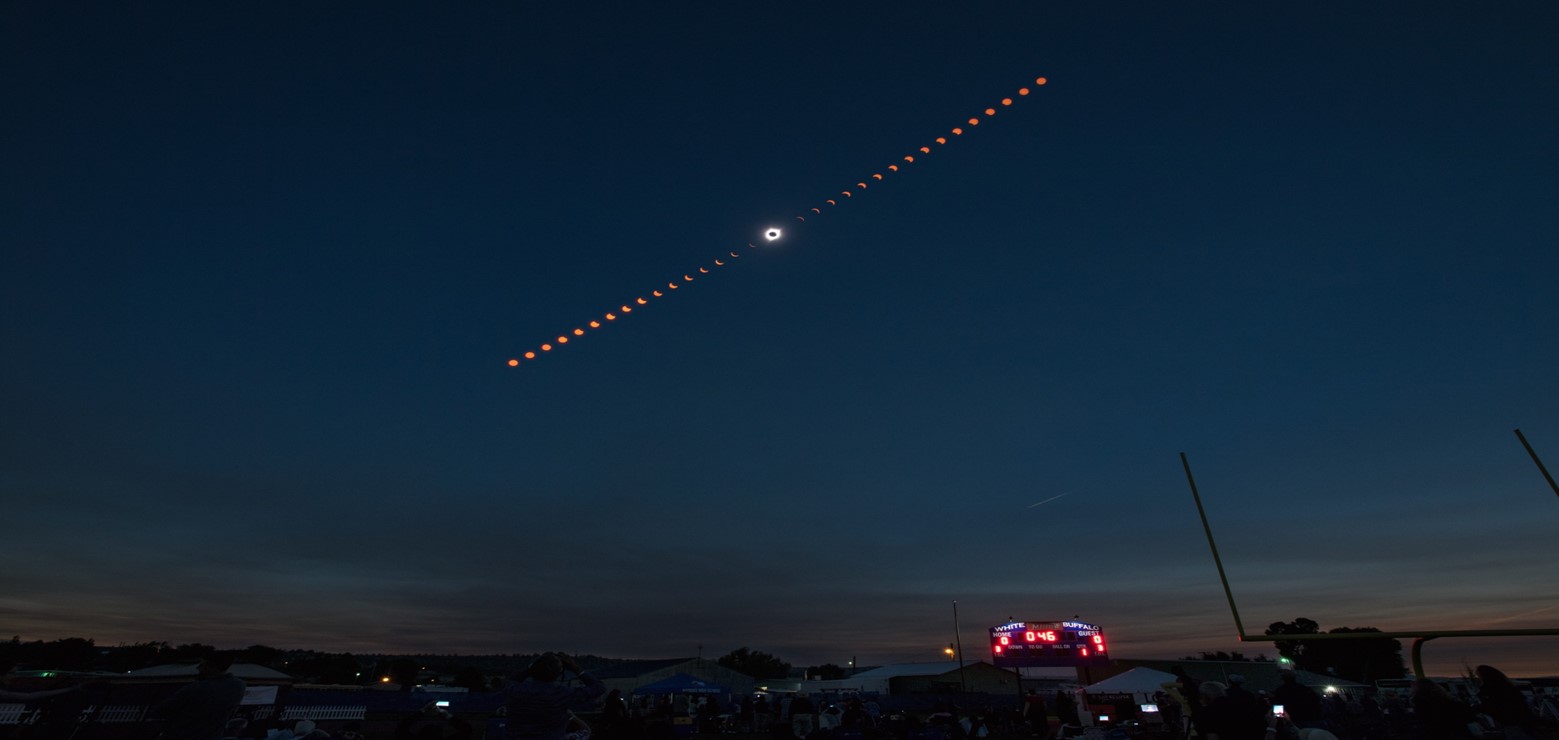A solar eclipse is a period where the Sun is partially or fully blocked by the Moon. In the last 150 years, this phenomenon has only occurred 15 times. The most recent eclipse took place in August 2017 and the next one is set to take the place in 2023. The next solar eclipse that will reach totality across the United States will be in April 2024.
In the image below, you are able to see a photo that NASA took from Oregon in 2017 when totality was reached, which lasted approximately 2 minutes and 30 seconds.

Photo by Aubrey Gemignani/NASA.
During an eclipse, totality is the timeframe where the moon is completely blocking out the sun, as shown in the photo above. As a result of this, you will see a sky that resembles the darkness of nighttime. However, totality does not always take place during an eclipse unless you are directly in line with the totality path (the area where the moon and sun will directly intersect from your viewing angle).
Remember, when viewing an eclipse it is very important to protect your eyes. Even mere seconds looking at the sun, or a part of the sun, without proper protection can cause permanent damage to your retina. Make sure you are wearing ISO approved, USA made solar eclipse viewing glasses. It is very important to verify that the sunglasses are ISO approved! There are, unfortunately, many from outside the US that don’t carry this certification and can cause damage to your eyes.
Fun Fact: Before the eclipse in August 2017, the last total solar eclipse that could be seen from the United States took place all the way back in February of 1979!
How did ancient civilizations view a solar eclipse?
Before humans knew that solar eclipses were a phenomenon of outer space, they had their very own beliefs that ranged drastically between ancient civilizations. Commonly, it was believed that a solar eclipse was a sign of bad luck that would bring widespread famine, death, and destruction. Here are just a few civilizations and what a solar eclipse meant for their empire/civilization:
Ancient China – Ancient China believed that a solar eclipse occurred when a celestial dragon devoured the sun as its own. Likewise, it was thought that an eclipse was a bad omen that told the future of the emperor – whether that meant success or failure. Therefore, they believed it was of the utmost importance to be able to predict an eclipse.
Fun Fact: During an eclipse in Ancient China, it was common for people to make loud sounds and beat on drums very loudly to scare away the celestial dragon that threatened their Sun.
Ancient India – Ancient India believed that a solar eclipse occurred when the Sun God required assistance. As a result, the time during an eclipse was set aside for generous donations so that humans could help the gods fight their enemies. This practice can even still be observed in modern-day India.
The Mayans – The Mayan civilization believed that solar eclipses were times when “star demons” were trying to devour the Sun. These star demons were believed to be the planets since you could see them during the eclipse.
The Aztecs – The Aztec civilization believed that a solar eclipse could mean the end of the world. Moreso, they believed that if an earthquake ever happened during an eclipse, this signaled the end of times. According to their calculations, this was meant to take place in the year 2012.
The Aztec people also believed that a solar eclipse is bad for pregnant women – a myth that is still in circulation.


